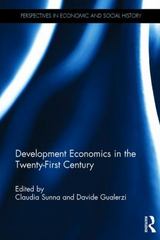Question
(a) For analytical purposes economists make certain assumptions about consumer behaviour. State and explain FOUR principal assumptions. (15 marks) (b) A manufacturer of three different
(a) For analytical purposes economists make certain assumptions about consumer behaviour.
State and explain FOUR principal assumptions.
(15 marks)
(b) A manufacturer of three different products calculates the price elasticity of demand for each
product as follows:
Product X: -1.5 Product Y: -1.0 Product Z: -0.3
The company wishes to maximise its revenues. Explain in respect of each of these products,
what change, if any, the company should make in the prices currently being charged to enable
it to achieve its aim.
(30 marks)
(c) A consumer buys 10 units of Good A when the price of Good B is 5.
When the price of Good B rises to 6 (the price of Good A remaining unchanged) the
consumer buys 14 units of Good A.
(i) Define cross elasticity of demand.
(ii) Using an appropriate formula, calculate this consumer's cross elasticity of demand for
Good A. Show your workings.
(iii) Is Good A a substitute for, or a complement to, Good B? Explain your reasoning.
(30 marks)
[75 marks]
2. (a) State and explain THREE key features of an oligopolistic market.
(15 marks)
(b) With the aid of ONE clearly labelled diagram:
(i) Explain the shape of the 'kinked demand curve' under oligopoly.
(ii) Explain the long run equilibrium position of a firm facing a 'kinked demand curve'.
(iii) Explain what is meant by the term 'rigidity of prices' under a 'kinked demand curve'.
(35 marks)
(c) (i) Explain THREE types of collusion which may occur in an oligopolistic market.
(ii) Do you believe that the Irish retail market for banking services (e.g. personal current
accounts.) operates under oligopolistic conditions? Explain your answer.
(25 marks)
[75 marks]
Page 5 of 8
3. (a) Distinguish between the following terms, using relevant examples in each case:
(i) Fixed Capital and Social Capital;
(ii) Savings and Investment;
(iii) Capital Widening and Capital Deepening.
(25 marks)
(b) State and explain FIVE factors affecting the level of investment in the Irish economy.
(25 marks)
(c) (i) State and explain Keynes's THREE motives for holding money.
(ii) Explain, with the aid of a diagram(s), Keynes's theory on the relationship between the
holding of money and the rate of interest.
Step by Step Solution
There are 3 Steps involved in it
Step: 1

Get Instant Access to Expert-Tailored Solutions
See step-by-step solutions with expert insights and AI powered tools for academic success
Step: 2

Step: 3

Ace Your Homework with AI
Get the answers you need in no time with our AI-driven, step-by-step assistance
Get Started


